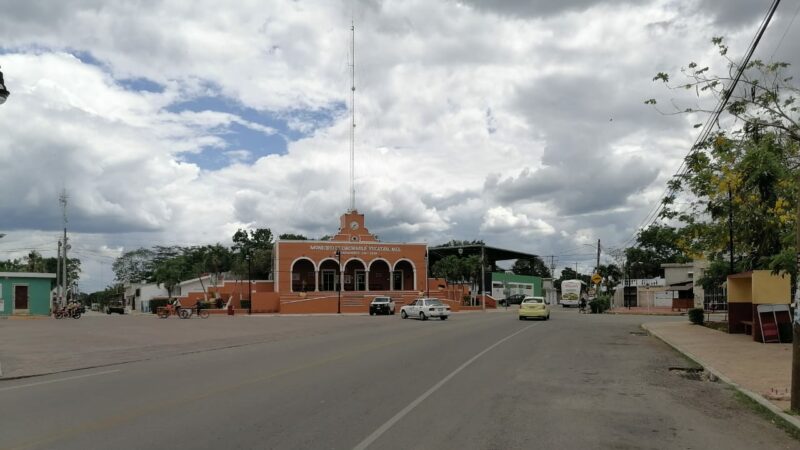Anthropology
Related: About this forumCreation of linguistic landscapes using ancient and contemporary Mayan writing
José Alfredo Hau is a Mayan language digital activism fellow
Written by
josealfredohaucaamal
Translated by
Teodora C. Hasegan
Translation posted 26 August 2022 17:10 GMT

Chichimilá, Yucatán, where the digital activism project will be carried out. Photograph by José Alfredo Hau Caamal. Used with permission.

Name: Jose Alfredo Hau Caamal
Language: Maya
Location: Chichimila, Yucatan

Project summary:
Creation of linguistic landscapes using ancient and contemporary Mayan writing through OpenStreetMap (OSM).
Bix a beele'ex, in k'aaba'e’ Alfredo Hau. Táan in jo'olintik u meyajil: U chíikulil boonil úuchben maayats'íib yéetel u t'aanil maaya kaaj tu péepet boonil openstreetmaps.
My name is José Alfredo Hau Caamal, I am 36 years old and I belong to the Mayan-speaking community X-Alau in the municipality of Chemax in Yucatán. I currently live in Chichimilá, Yucatán.
I teach the children of the community how to decipher hieroglyphs. I am also a freelance translator from Spanish into Mayan on various topics, and I create projects focused on language and culture.
My project
This digital activism project is based on the teaching of ancient Mayan writing known as úuchben ts'íib, epigraphy, hieroglyphic writing, Mayan glyphs or, as scholars say, the classic Mayan writing system. Being proud of our legacy as a point of reference for this project is fundamental so that the Mayan language can be used in spaces of interaction and that the community members can see it represented on signs, posters, inscriptions or on any physical surface.
My project includes creating linguistic landscapes using ancient and contemporary Mayan writing through OpenStreetMap, as well as creating locations, routes and itineraries using the linguistic landscape of the community to strengthen the language and revitalize the ancient Mayan writing. It also includes training children, youth, and adults in the use of the writing system to create posters, murals, signs, advertisements and signage for public spaces and uploading them to OpenStreetMap to highlight the spaces of common use, and historical places with names given by the community.
More:
https://rising.globalvoices.org/blog/2022/08/26/creation-of-linguistic-landscapes-using-ancient-and-contemporary-mayan-writing/
multigraincracker
(36,798 posts)There was one individual, most likely the only one in the world, that still spoke that language.
Deuxcents
(25,123 posts)They had the most progressive culture n their kingdom/country was far n wide. And then..they’re gone. Their accomplishments w/ numbers n celestial observations are still studied n used today. And we call them ancients but they were a great society from what I’ve learned. How exciting to have an understanding of their language n symbols. Very interesting..
wnylib
(25,355 posts)Their ancient civilization declined politically, but the descendants of the old empire and their culture are still there - millions of them, speaking different dialects of the Mayan language and many of them still following some of the Mayan religious beliefs (except human sacrifice, of course), sometimes intermixed with Christian influences.
For comparison, the Roman Empire no longer exists, but Roman descendants still exist in Italy, speaking a language derived from Latin and following some cultural traditions in foods and family relationships.
The Spanish Empire no longer exists, but the Spanish people did not disappear.
Same for the British Empire.